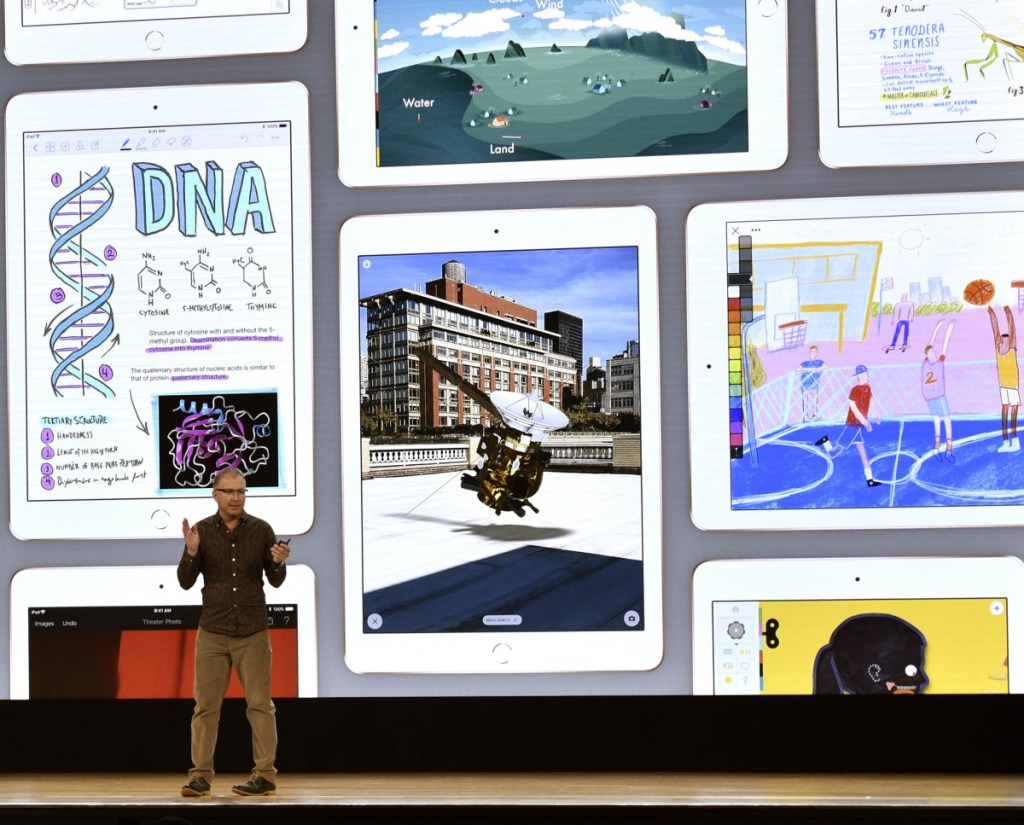Apple is going head-to-head with Google in education, a market the iPhone maker helped pioneer but has let languish.
For the first time in several years, Apple released hardware specific to education: a new iPad that squares up against Google’s inexpensive Chromebook laptops, which have become popular in schools. Apple also introduced an education service called Schoolwork, which will compete with Google’s Classroom software.
The new iPad has a 9.7-inch screen and costs $299 for students and schools, and $329 for other users. It supports the Apple Pencil accessory, a first for a non-Pro iPad model. New versions of its iWork productivity apps will work with the stylus, which costs $89 for students, $10 below the regular price.
Apple executive Greg Joswiak called the new iPad “faster than virtually any Chromebook” during an event Tuesday at a Chicago school. It was the first time Apple has held a product launch geared toward education since 2012, when it unveiled a tool for designing e-books for the iPad.
On Monday, ahead of Apple’s announcement, Google and partner AsusTek Computer Inc. announced a $329 tablet powered by the same Chrome operating system that runs Chromebooks. Most non-Apple tablets run Google’s Android mobile operating system.
Apple accounted for 17 percent of mobile computing shipments to American students in kindergarten through high school, according to data from the third quarter of 2017 published by Futuresource Consulting. Devices running Google’s operating systems held 60 percent of the market, and Windows PCs had 22 percent. While Macs and iPads make up less than 20 percent of Apple’s sales combined, students and teachers are a key market to drive future purchases.
Marketing executive Susan Prescott announced a new app called Schoolwork for iPads that helps teachers assign work and monitor student progress. The iPhone maker also unveiled a new service called ClassKit, which allows developers to write apps that integrate with the Schoolwork service. This will let teachers send students to specific parts of apps to conduct classwork or access material. The new apps will be available in June, Apple said.
The company also said Apple student accounts through schools will get 200 gigabytes of iCloud storage for free, compared with the regular 5 gigabytes. Google’s G Suite for Education service offers unlimited cloud storage, and new Chromebooks come with 100 gigabytes of free storage for two years.
With the cheaper iPad and new education platform, Apple is banking on changing its foothold in education, but the lower-cost tablet could also help buoy iPad sales more widely.
While the iPad business recently returned to growth after multiple declining quarters, demand for tablets is weak. According to research firm IDC, the market shrank by about 7 percent in 2017. Apple grew 3 percent last year and leads the industry with about a quarter of the market. A cheaper model that integrates Apple’s hardware with new services could help revive the tablet market. Later this year, Apple plans to unveil a redesigned iPad Pro with features from the iPhone X like facial recognition, Bloomberg News reported last year.
Send questions/comments to the editors.


